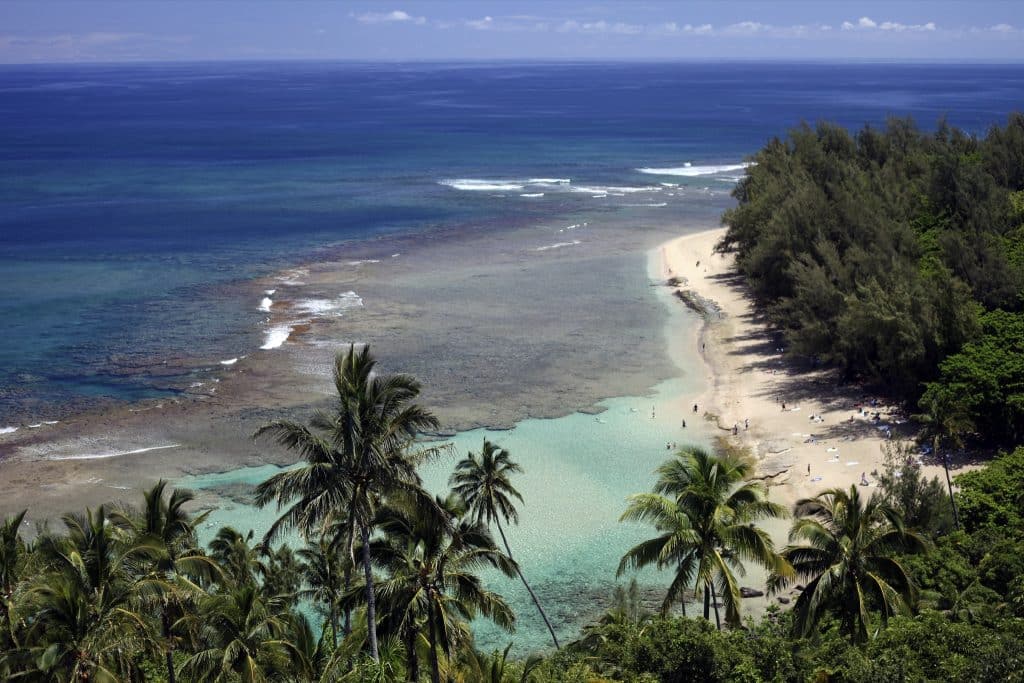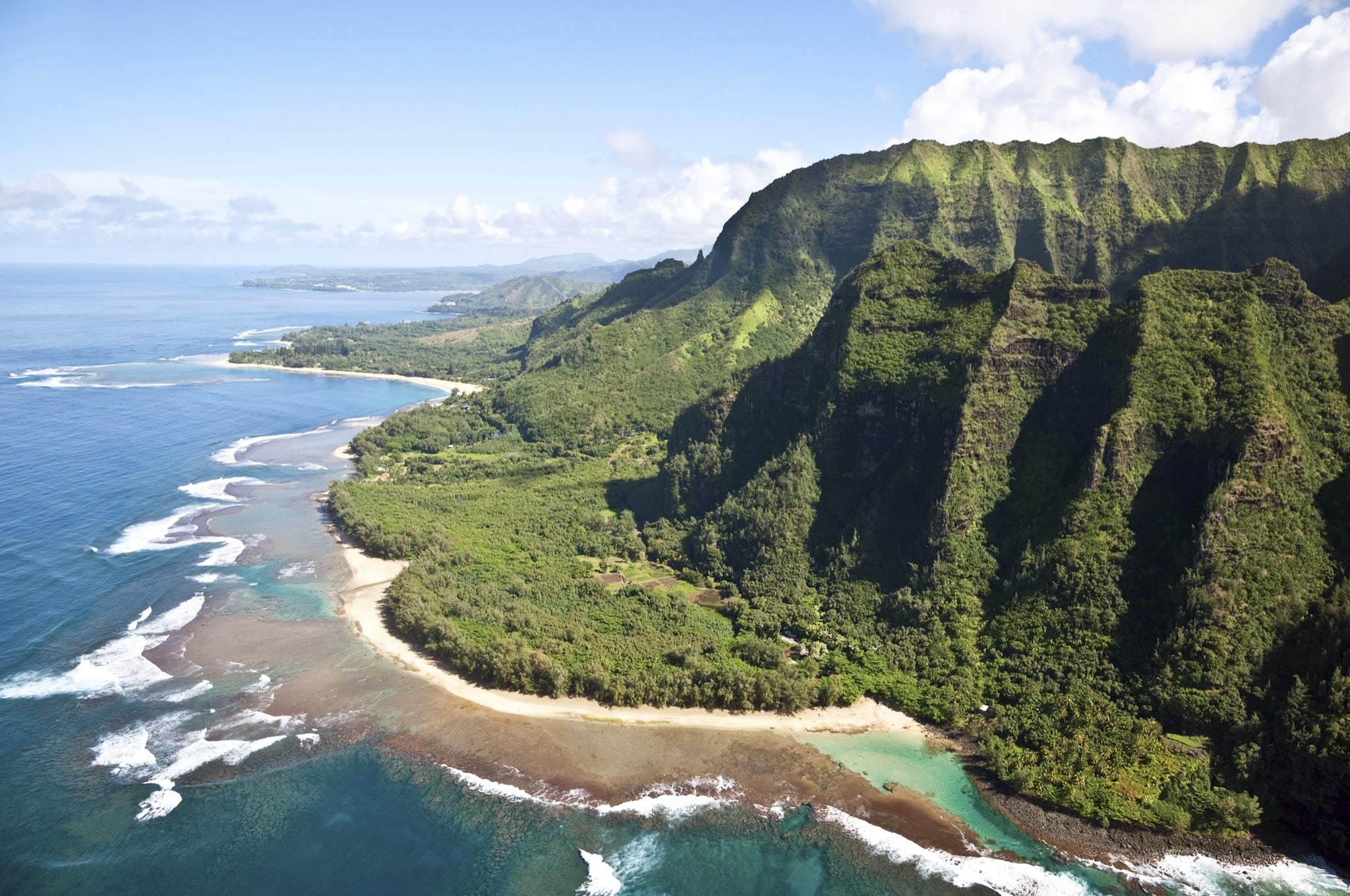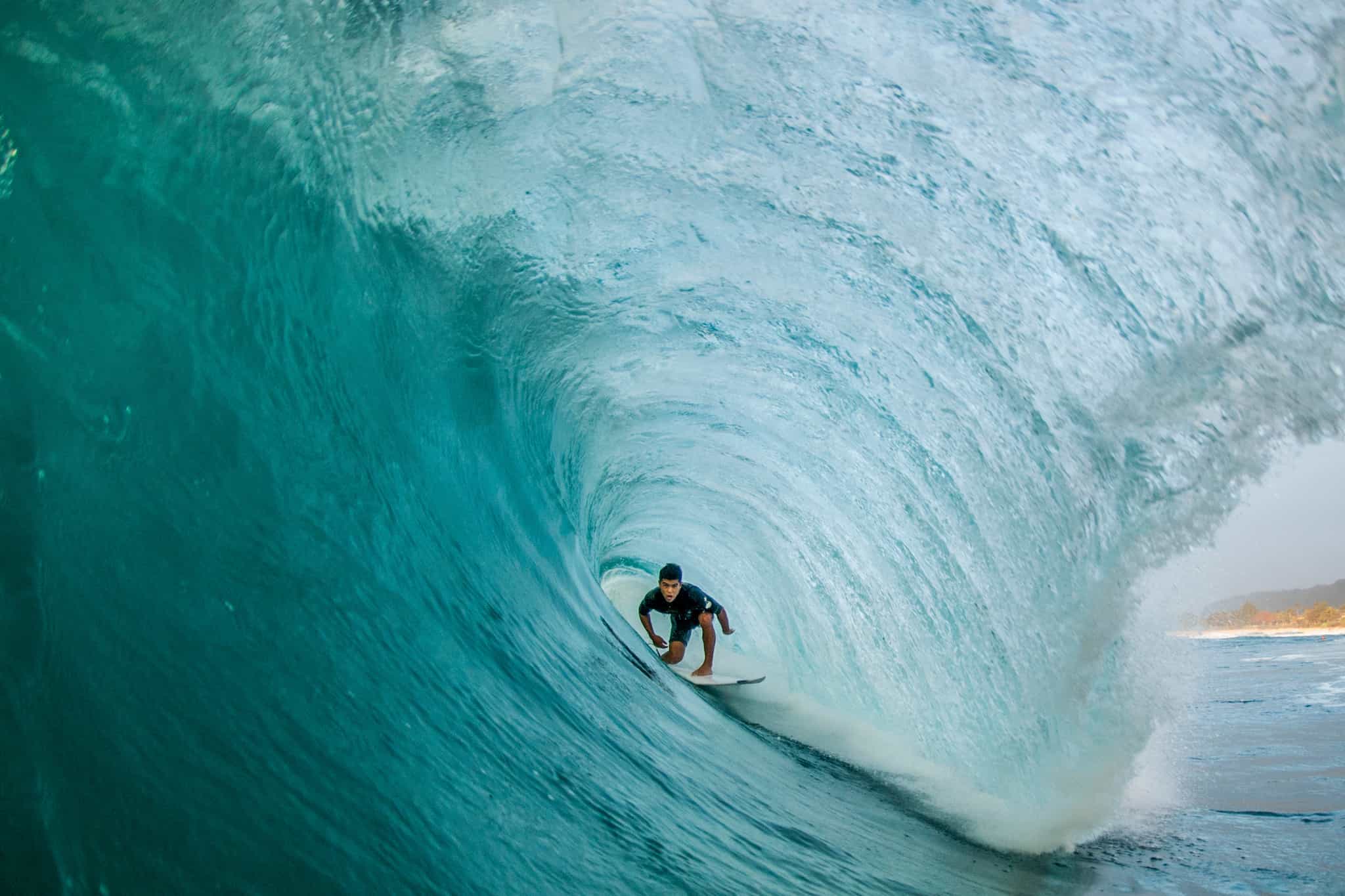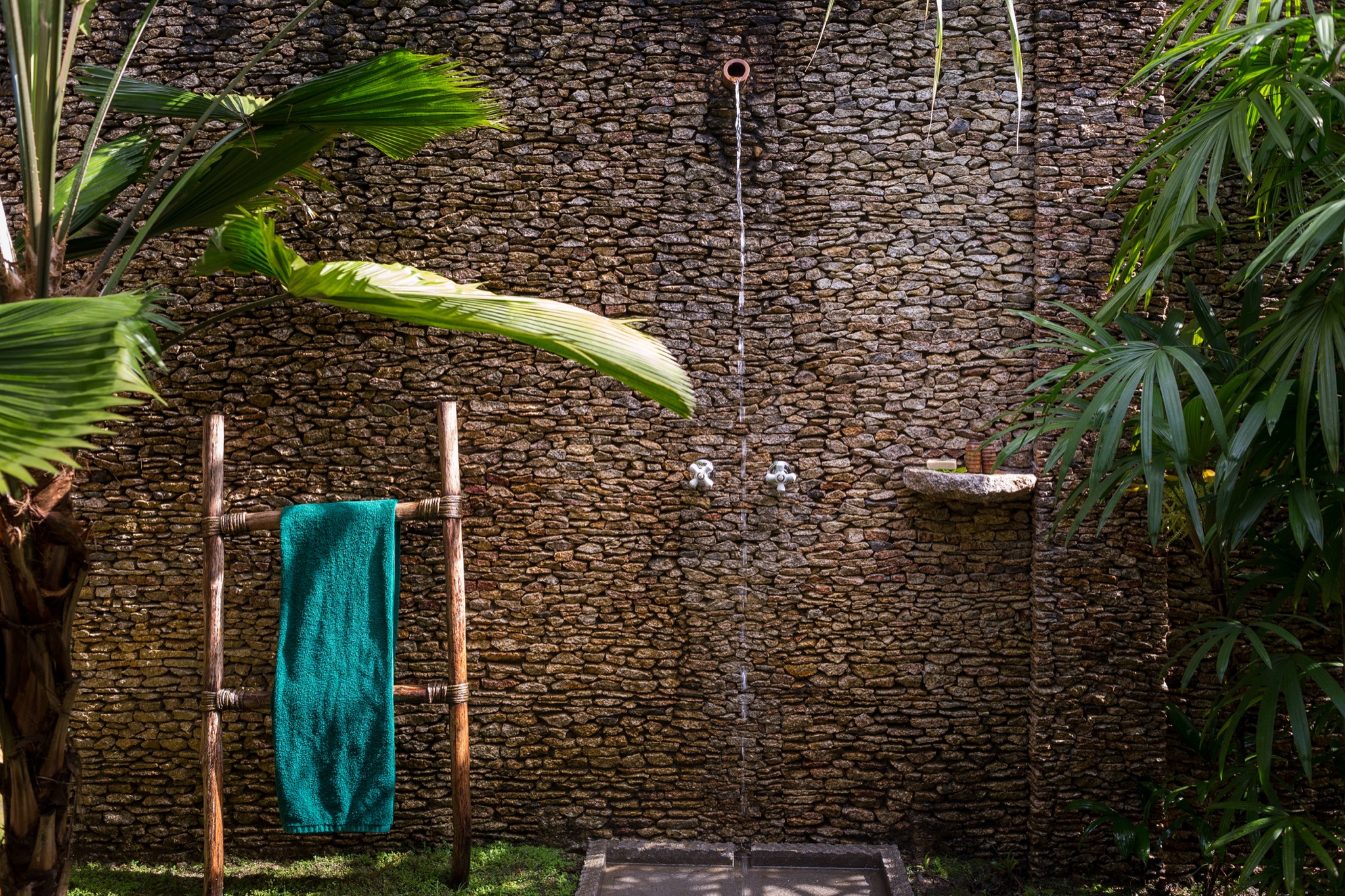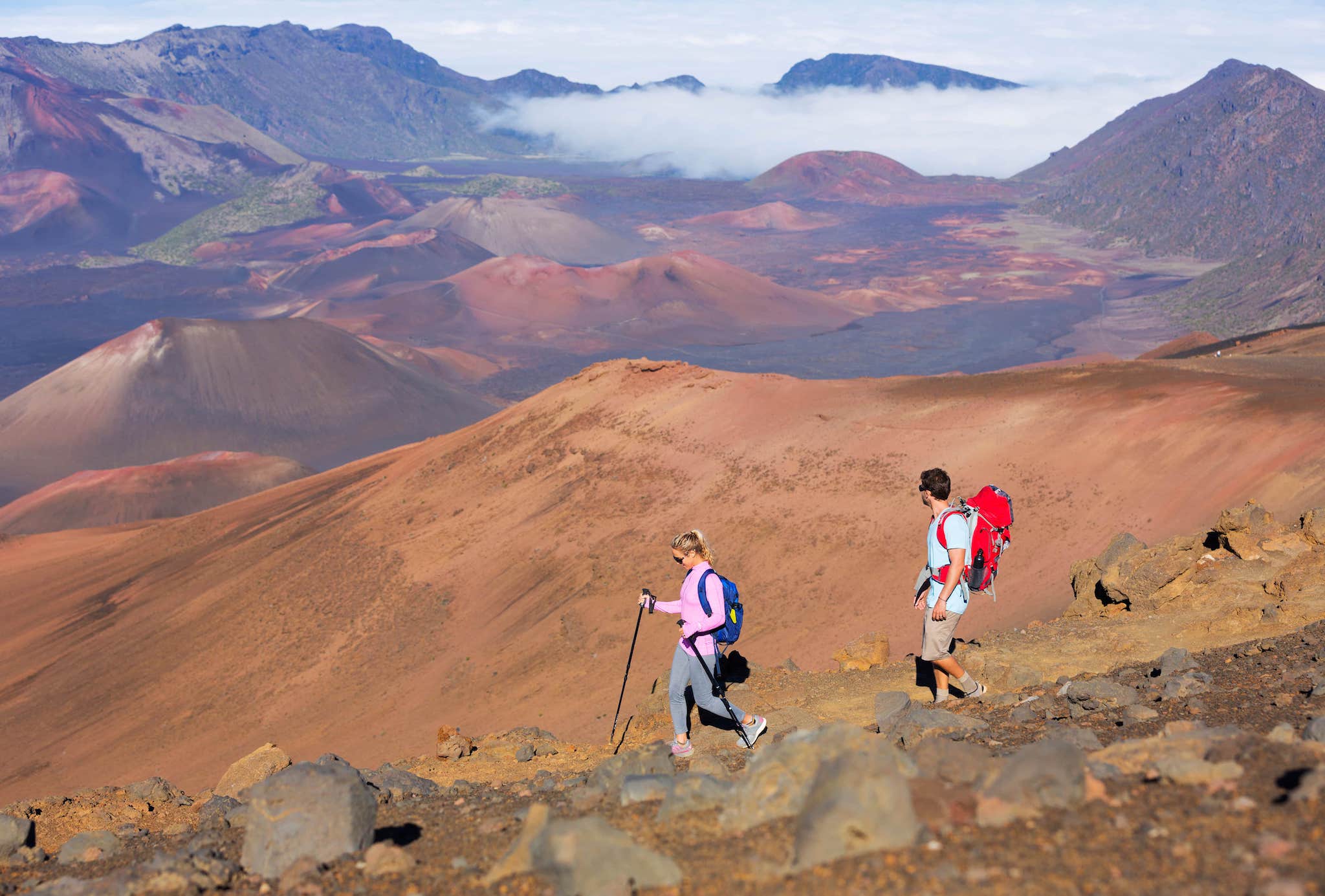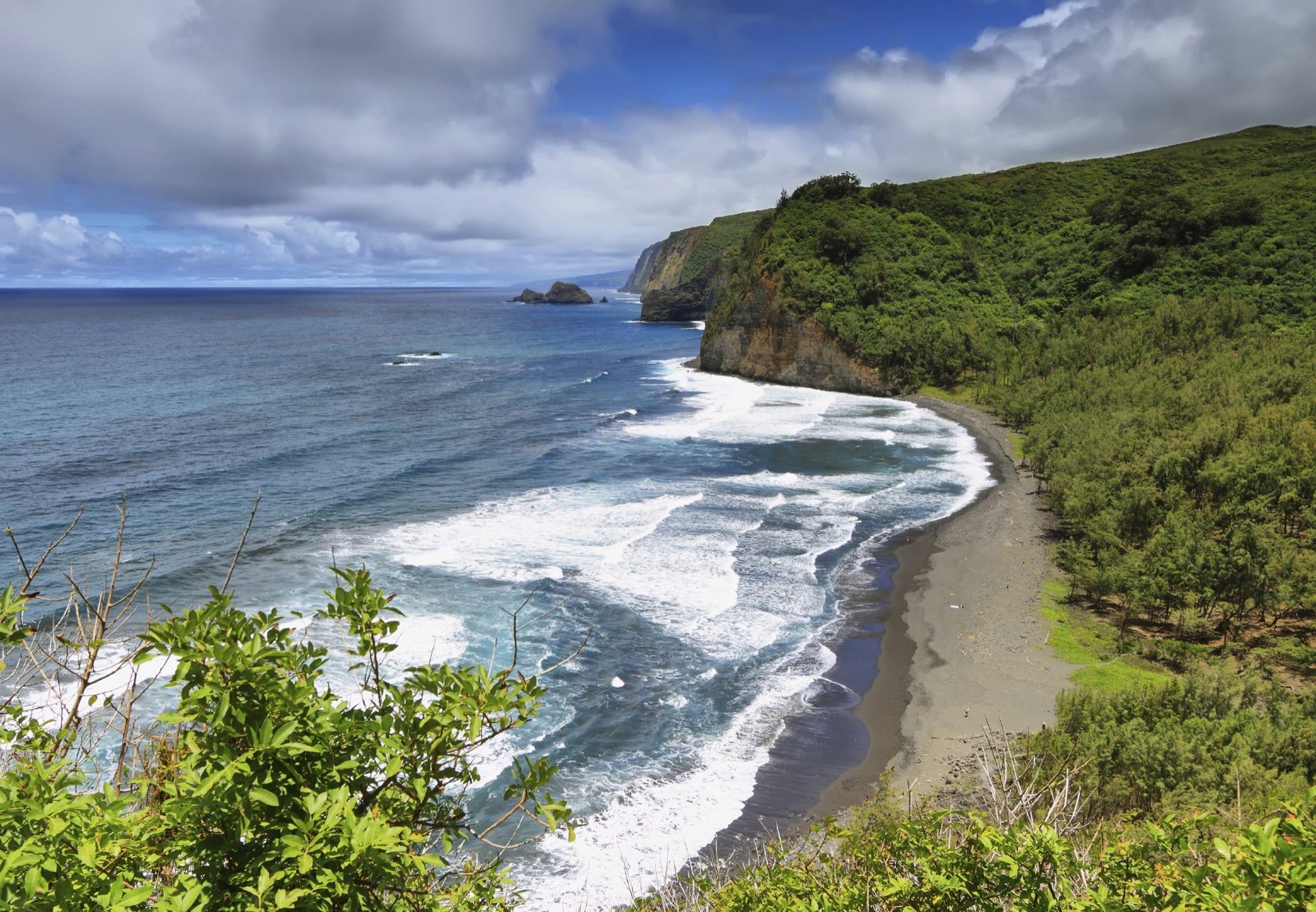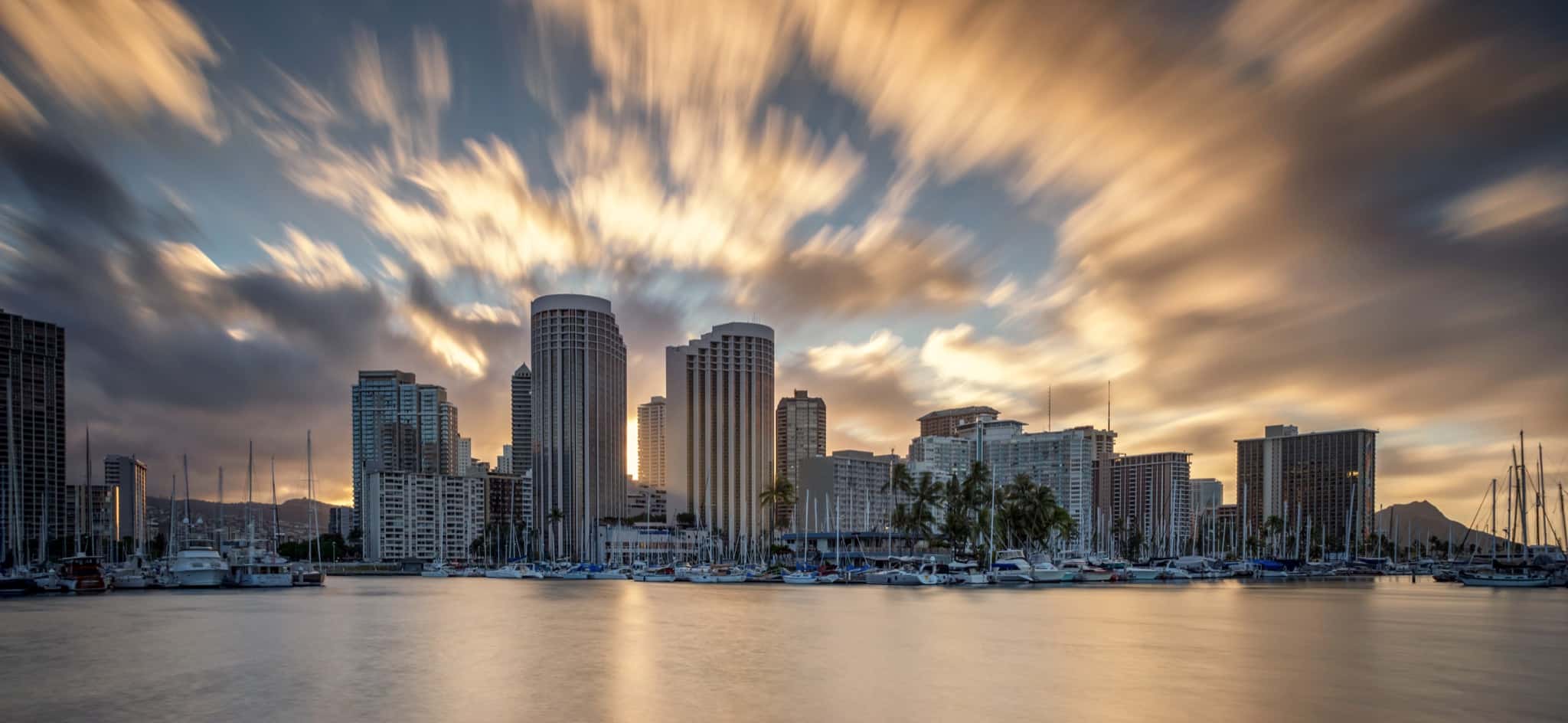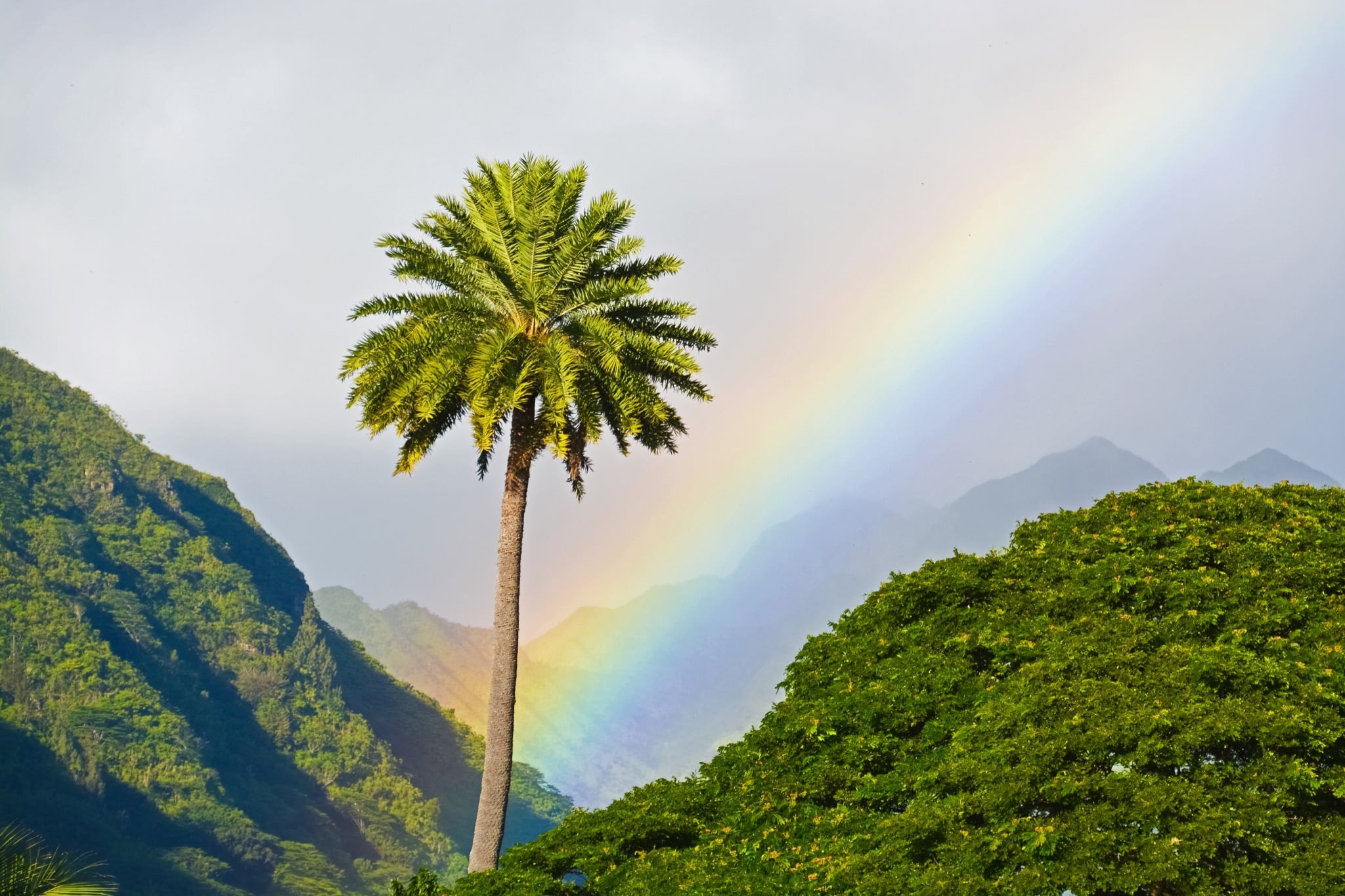Hawaii’s Highway 560 meanders along the northeast coast of Kauai, passing through coastal towns, taro fields, and forests on the way to Ke’e Beach. The end of the road marks the beginning of the wild and unsettled section of the island known as the Napali Coast. It is a place of towering sea cliffs, deserted surf-washed beaches, and lush rainforest valleys where waterfalls cascade from emerald hillsides.
To explore this pristine landscape, you’ll need to lace up your walking shoes and pack plenty of water and snacks because where you are headed, there are no roads, no cell service, no beach bars, and no signs of civilization.
Coastal Hike
From the parking area at Ke’e Beach, the Kalalau Trail winds its way along the Napali Coast. The route climbs snake-like up and over coastal bluffs then descends into verdant river valleys and beaches free of human development. The route is challenging at the best of times, and rain can turn the trail into a treacherous slip-and-slide. In its entirety, this 20-mile out-and-back route requires at least two full days of arduous trekking. Most hikers are content to make the two-mile trek to Hanakapiai Beach, while slightly more ambitious can take a side trip on an inland route that climbs an additional mile to reach a scenic waterfall pool.
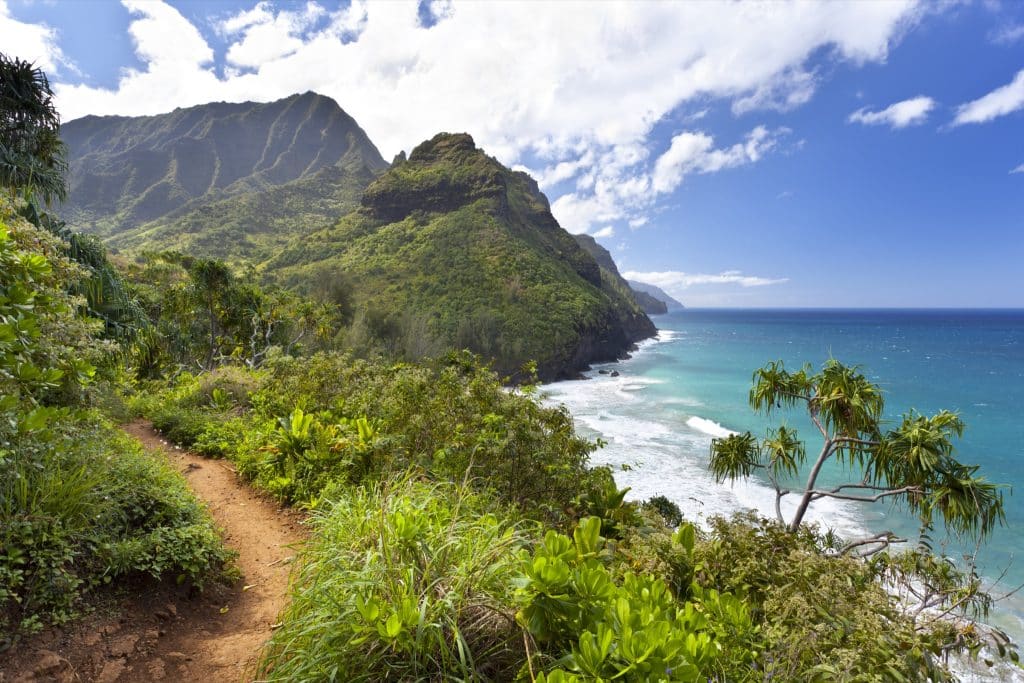
Sunrise and Sunset
With cliffs rising abruptly from the sea to heights of nearly 4,000 feet, it’s easy to see why the Napali Coast has thwarted road builders and remains free of modern development. Yet despite the remote nature of the coastline, the valleys that lie hidden between these forbidding headlands were once settled by native peoples. As early as the 12th century Polynesian sailors migrating from the Eastern Pacific came ashore to fish and farm in lush volcanic soils blessed with an abundance of rain to nourish crops. Once a thriving center for inter-island trade, these settlements became increasingly isolated with the arrival of modern shipping and were abandoned by the start of the 20th century.
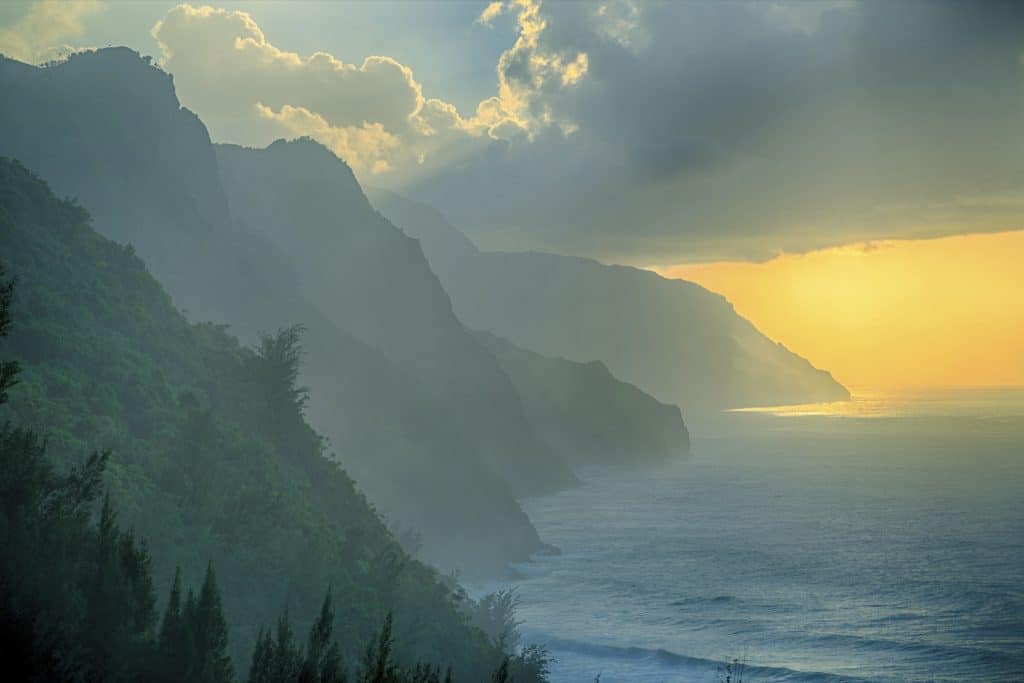
Sea View
The easy way to view the Napali coast is by helicopter tour. When the seas are calm, the beaches and valleys of the Napali Coast can also be reached by boat. A favorite stop on these cruises is the ancient Hawaiian fishing village of Nu’alolo Kai, which sits on a thin strip of coastal lands overlooked by an amphitheater of sheer cliffs. Archeological records show that this site was occupied for more than 800 years. Today, the only evidence that remains is a network of stone walls and the platform-like foundations of homes. Botanists consider this small valley to be a treasure trove of native plants, thanks to its isolation from invasive species.
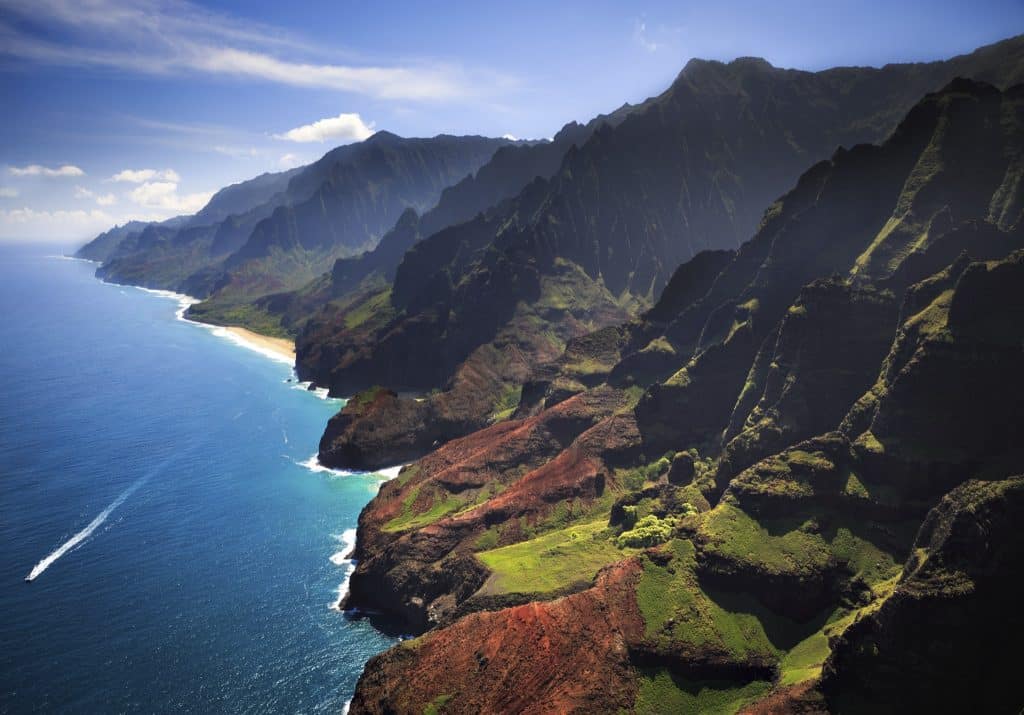
Sea Caves
A strenuous eight-mile hike on the Kalalau Trail leads to a striking coastal landmark. When the top of a large sea cave eroded and collapsed from a huge skylight, it left in place a 50-foot archway that opens into a circular bowl of churning surf known as the Queen’s Bath. When weather permits, this site can also be visited by tour boat. Other nearby sites often included on boat tours include Honopu Sea Cave, which has a cascading waterfall inside, and Waiahuakua, which is the largest sea cave on the Napali Coast and, with a length of 1,100 feet, the second-longest sea cave in the United States.
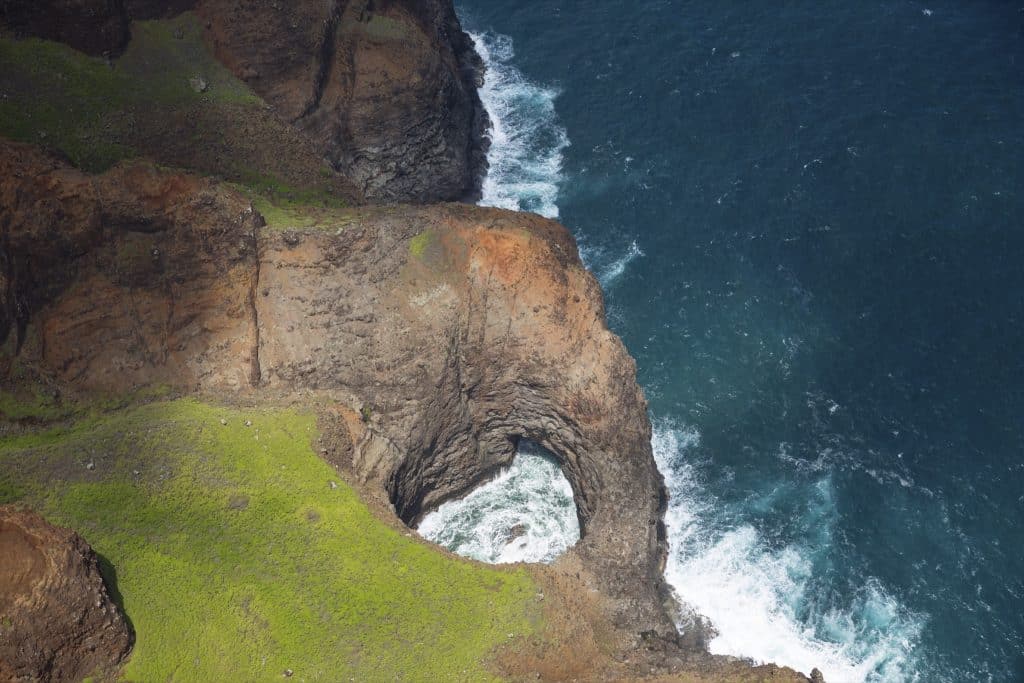
Pristine Vista
A driving tour of Waimea Canyon on Kokee Road includes a chance to see the Napali Coast from a different point of view. A stop at the Kalalau overlook takes in panoramic vistas of the eponymous valley below. The Kalalau Valley sits center stage on the Napali Coast. It is one of the most-photographed and best-recognized valleys in all of Hawaii and has been featured in a number of films from King Kong to Jurassic Park. No roads lead downward from the overlook, but a network of trails provides access for hikers and campers who are willing to put in a bit of sweat equity for the rewarding experience of trekking into a truly wild tropical setting.

Beach Time
Most hikes into the Napali Coast and the Kalalau trail begin and end at Ke’e Beach State Park. The Kalalau Trail is an 11-mile roundtrip adventure and leads to Hanakapiai and Kalalau Beach. At Ke’e you’ll find a fringing coral reef that breaks incoming surf to create calm conditions for snorkeling and swimming during the summer months. Winter brings high surf and strong currents. This is a popular destination, but by walking east, you can usually find privacy to enjoy one of Hawaii’s most beautiful beaches. If time permits, stay to watch the sun sink into the sea against the backdrop of the cliffs.
